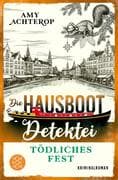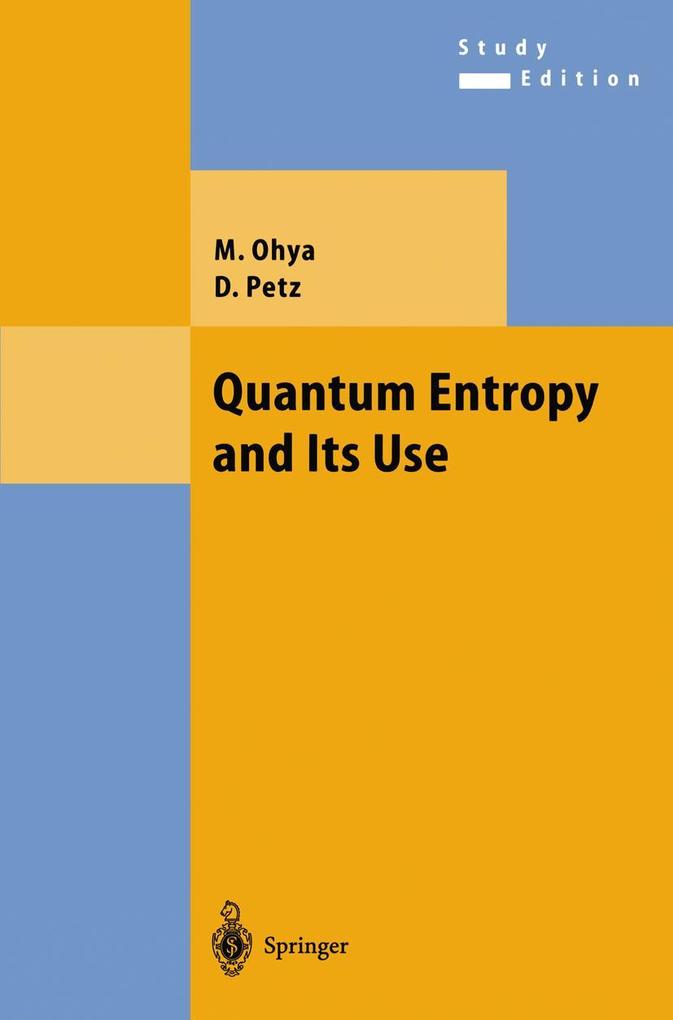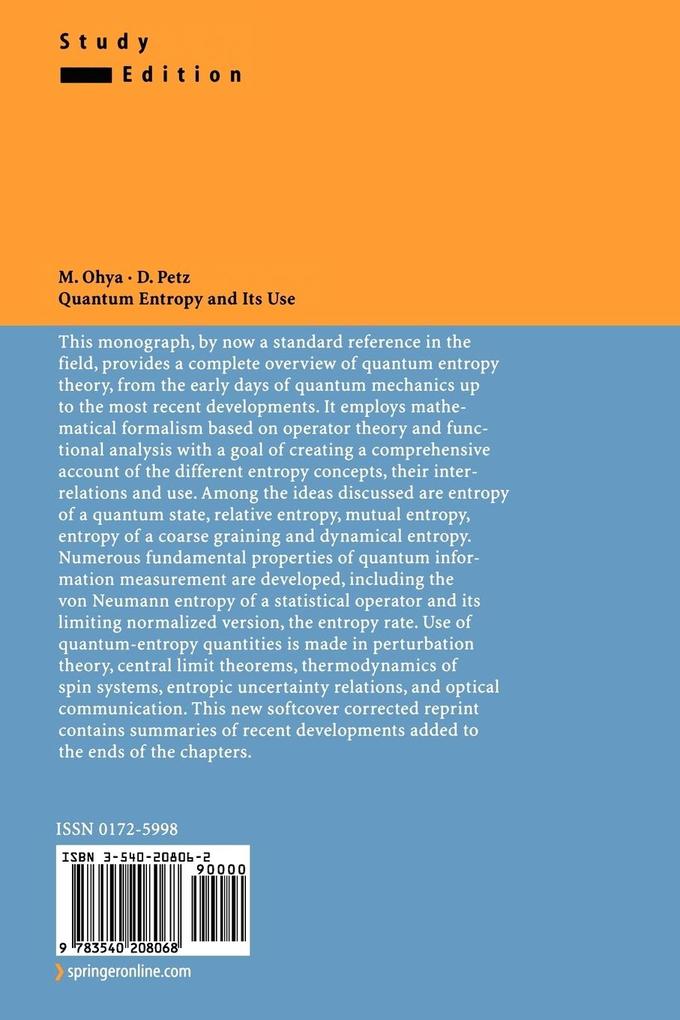Entropy is a concept which appears in several fields and it is in the center of interest both in mathematical and physical subjects, sometimes even at other places, for example in communication engineering. The birthplace of quantum entropy was in quantum statistical mechanics. Quantum entropy is not a single concept but rather a family of notions which started with the von Neumann entropy of a density matrix and has developed in a number of directions. The heritage of quantum entropies from quantum mechanics is their strong relation to Hilbert space. This book begins with the entropy of a state and through the entropy of coarse graining it proceeds to the quantum dynamical entropy. A bunch of topics shows the direct physical relevance of the entropy methods. The math ematical formalism is based on operator theory and mostly the language of operator algebras is used. The use of the concepts and methods of functional analysis not only makes the theory of quantum entropy more uniform and lu cid, but it essentially simplifies and extends it. A comprehensive presentation without these elements would not be possible.
Inhaltsverzeichnis
I Entropies for Finite Quantum Systems. - 1 Fundamental Concepts. - 2 Postulates for Entropy and Relative Entropy. - 3 Convex Trace Functions. - II Entropies for General Quantum Systems. - 4 Modular Theory and Auxiliaries. - 5 Relative Entropy of States of Operator Algebras. - 6 From Relative Entropy to Entropy. - 7 Functionals of Entropy Type. - III Channeling Transformation and Coarse Graining. - 8 Channels and Their Transpose. - 9 Sufficient Channels and Measurements. - 10 Dynamical Entropy. - 11 Stationary Processes. - IV Perturbation Theory. - 12 Perturbation of States. - 13 Variational Expression of Perturbational Limits. - V Miscellanea. - 14 Central Limit and Quasi-free Reduction. - 15 Thermodynamics of Quantum Spin Systems. - 16 Entropic Uncertainty Relations. - 17 Temperley-Lieb Algebras and Index. - 18 Optical Communication Processes.











